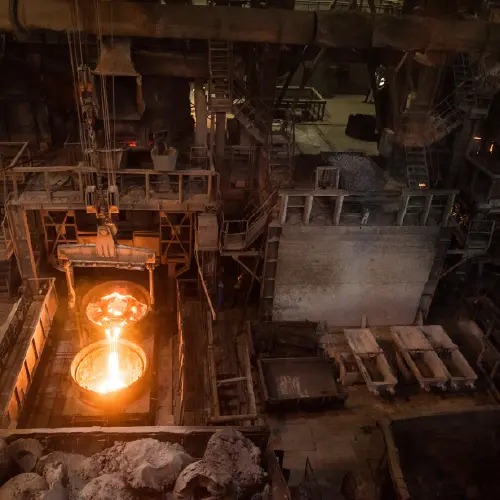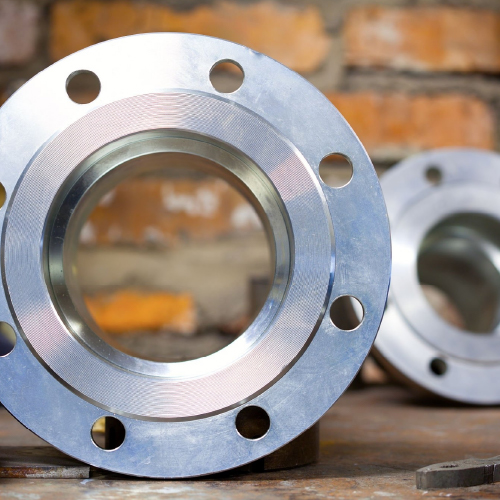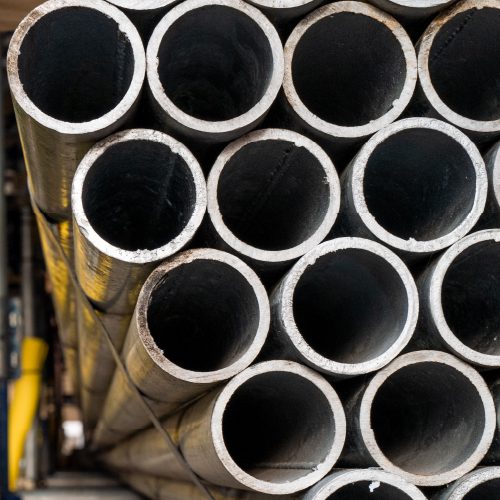Tensile Strength in Metals: A Key to Material Performance

TENSILE STRENGTH IN METALS: A KEY TO MATERIAL PERFORMANCE
Overview Of This Article
- TENSILE STRENGTH IN METALS: A KEY TO MATERIAL PERFORMANCE
- Introduction To Tensile Strength
- What is Tensile Strength?
- Measurement and Units of Tensile Strength
- Factors Influencing Tensile Strength
- Mechanical Engineering Insights:
- Practical Applications of Tensile Strength
- Real World Case Studies
- Testing and Standards of Tensile Strength
- Common Metals and Their Tensile Strength
- How To Enhance Tensile Strength
- Tensile Strength in Metals: The Conclusion
- THANK YOU
- DON'T MISS ON LATEST ARTICLES!
- MORE RELATED ARTICLES
Introduction To Tensile Strength
In the realm of materials science, the mechanical prowess of tensile strength stands as a keystone for engineers and material scientists. This vital metric serves as a gateway to understanding a material's resilience under tension, underpinning material selection and design in the expansive field of mechanical engineering. As we embark on this exploration, envision tensile strength not just as a numerical parameter but as a fundamental guide shaping the integrity and performance of materials under mechanical stresses.
What is Tensile Strength?
Tensile strength transcends numerical values to become a meticulous examination of a material's response to tension. Visualize a metal specimen undergoing a controlled, escalating pulling force in a tensile test. Beyond determining the breaking point, this process illuminates the material's dynamic behavior under incremental tension. The units of measurement—Pascals, megapascals, or pounds per square inch—quantify this property, providing a tangible assessment for mechanical engineers to decipher a material's performance in real-world scenarios where forces are diverse and dynamic.
Measurement and Units of Tensile Strength
The journey into tensile strength unfolds within a precisely engineered tensile testing apparatus. This sophisticated instrument subjects a material specimen to controlled, incremental tension until it reaches a critical failure point. The units of measurement, whether expressed in Pascals or pounds per square inch, encapsulate the material's intrinsic ability to withstand applied forces. Far from being abstract figures, these units become tangible benchmarks for mechanical engineers, offering a nuanced understanding of how materials will perform under various mechanical stressors in complex real-world scenarios.
Factors Influencing Tensile Strength
- Material Composition:
In the intricate symphony of tensile strength, the composition of metals takes center stage. Alloying, a deliberate fusion of elements, becomes a strategic influencer. Consider the intentional addition of carbon to iron, transforming it into the robust material we know as steel. This intentional alloying enhances tensile strength, shaping the material's mechanical identity and expanding its utility across various applications. - Microstructure:
Delving into the microscopic intricacies of a material's structure unveils the domain of grain size and arrangement. Smaller grain sizes become emblematic of heightened tensile strength. Mechanical engineers must navigate this intricate landscape, understanding how microstructural elements impact a material's performance under the influence of tension. By manipulating and optimizing grain size, engineers can tailor materials to specific applications, enhancing their tensile strength. - Temperature:
Temperature fluctuations introduce a dynamic variable in the mechanical behavior of materials. Metals, akin to finely tuned mechanical instruments, resonate differently under varying thermal conditions. This nuanced understanding of temperature-dependent variations becomes paramount for mechanical engineers, particularly in applications where materials are subjected to a spectrum of operating temperatures. The consideration of temperature-induced changes in tensile strength ensures the reliability and performance of materials across diverse environmental conditions.
Mechanical Engineering Insights:
In the realm of mechanical engineering, tensile strength is not just a material property but a key parameter in designing structures and components that withstand real-world forces. It is often linked to other mechanical properties, creating a web of interdependencies that engineers must navigate.
Stress-Strain Curve
One fundamental concept intimately tied to tensile strength is the stress-strain curve. This graphical representation illustrates a material's response to applied stress. The slope of the curve at the onset of deformation provides the modulus of elasticity, while the peak indicates the ultimate tensile strength (UTS). Beyond the UTS, the curve reveals the material's ductility and toughness. Understanding this curve aids engineers in predicting a material's behavior under different loading conditions.
Engineering Stress (σ) and Engineering Strain (ε)
The relationship between applied force and original cross-sectional area is denoted as engineering stress (σ). Similarly, engineering strain (ε) represents the deformation relative to the original length. These parameters are pivotal in calculating tensile strength using the formula:
\(\sigma=F/A_0\)
Where:
- \(\sigma\) is the engineering stress,
- \(F\) is the applied force, and
- \(A_0\) is the original cross-sectional area.
This formula underscores the direct connection between applied force and the material's resistance to deformation.
True Stress (σₜ) and True Strain (εₜ)
For a more accurate representation, engineers often use true stress and true strain. True stress considers the instantaneous cross-sectional area during deformation, providing a more precise measure of a material's strength under extreme conditions. The formula for true stress is:
\(\sigma_t=F/A\)
Where:
- \(\sigma_t\) is the true stress, and
- \(A\) is the instantaneous cross-sectional area.
Strain-Hardening Exponent (n)
In materials exhibiting plastic behavior, the strain-hardening exponent (n) becomes crucial. It characterizes the material's resistance to further deformation after the onset of plasticity. A higher \(n\) indicates greater strain hardening. This parameter is often determined from the logarithmic relationship between true stress and true strain:
\(\sigma_t=K\bullet\varepsilon_t^n\)
Where:
- \(K\) is a constant
- \(\varepsilon_t\) is the true strain.
Fracture Mechanics
In addition to tensile strength, engineers delve into fracture mechanics, which examines a material's behavior at the point of fracture. Concepts such as critical stress intensity factor (\({K_I}_c\)) and fracture toughness (\(K_c\)) become crucial in understanding a material's resistance to crack propagation.
Practical Applications of Tensile Strength
The theoretical understanding of tensile strength and associated mechanical properties finds practical applications across diverse industries.
- Aerospace Engineering:
In the aerospace sector, where materials must endure extreme conditions, tensile strength is a paramount consideration. Aircraft components, subjected to varying loads during flight, demand materials with high tensile strength to ensure structural integrity. The interplay of tensile strength and other mechanical properties determines the materials selected for critical parts like wings, fuselage, and landing gear. - Automotive Design:
In the automotive industry, where safety is paramount, materials with optimal tensile strength play a crucial role. From the chassis to components like suspension systems and safety features, the mechanical properties, including tensile strength, influence material choices. The ability to withstand impact forces and maintain structural integrity under varying conditions is a testament to the importance of tensile strength in automotive design. - Structural Engineering:
In civil and structural engineering, tensile strength is pivotal for designing buildings, bridges, and infrastructure that withstands a multitude of forces. The tensile strength of materials like concrete and steel influences the structural stability and durability of these constructions. Understanding the mechanical behavior of materials under tension ensures the safety and longevity of structures.
Real World Case Studies
The theoretical understanding of tensile strength and associated mechanical properties finds practical applications across diverse industries.
- The Boeing 787 Dreamliner:
The use of advanced materials in the Boeing 787 Dreamliner exemplifies the practical application of tensile strength in aerospace engineering. The aircraft's airframe employs a significant amount of carbon-fiber-reinforced composites, known for their high tensile strength and lightweight characteristics. This strategic material selection enhances fuel efficiency and overall performance. - Automotive Design:
In the automotive industry, where safety is paramount, materials with optimal tensile strength play a crucial role. From the chassis to components like suspension systems and safety features, the mechanical properties, including tensile strength, influence material choices. The ability to withstand impact forces and maintain structural integrity under varying conditions is a testament to the importance of tensile strength in automotive design. - High-Performance Automotive Components:
Consider the development of high-performance automotive components, such as those used in Formula 1 racing. Materials like titanium alloys, renowned for their exceptional tensile strength, are employed to create lightweight yet robust components. This application showcases how tensile strength contributes to achieving optimal performance in demanding conditions. - Suspension Bridges:
The design and construction of suspension bridges provide a compelling case in structural engineering. Materials like high-strength steel cables, chosen for their exceptional tensile strength, play a pivotal role in supporting the bridge's load. Tensile strength becomes a critical factor in ensuring the stability and safety of these iconic structures.
Testing and Standards of Tensile Strength
The practical assessment of tensile strength involves standardized testing methods conducted using universal testing machines. Tensile tests provide precise insights into a material's behavior under tension, offering data that engineers use to make informed decisions. Adherence to industry standards and certifications ensures the reliability of materials, guaranteeing their performance under specified conditions.
In addition to conducting extensive tensile tests, Raykam Alloys LLP provides certifications that validate the material's compliance with specified standards. These certifications offer crucial information about the material's mechanical properties, chemical composition, and manufacturing processes. The traceability of materials from their source through production and testing adds an extra layer of reliability, giving clients the confidence that the materials they receive adhere to the highest quality standards.
Common Metals and Their Tensile Strength
- Steel:
Steel, a ubiquitous material in construction and manufacturing, is renowned for its high tensile strength. The intentional alloying of iron with carbon and other elements enhances its mechanical properties, making it a stalwart choice for structures requiring strength and durability. - Aluminum:
Aluminum, prized for its lightweight properties, exhibits commendable tensile strength. Its application in aerospace and automotive industries underscores the balance between weight reduction and structural integrity, where tensile strength plays a pivotal role. - Copper:
While known for its conductivity, Copper also possesses a distinctive tensile strength profile. Although not as high as steel or aluminum, copper's unique combination of properties makes it suitable for specific applications, particularly in electrical and electronic industries.
How To Enhance Tensile Strength
- Heat Treatment:
Heat treatment processes play a pivotal role in enhancing the tensile strength of materials. Techniques like quenching and tempering involve controlled heating and subsequent cooling, influencing the microstructure of the material. Through this thermal manipulation, the crystalline structure is optimized, resulting in increased tensile strength. The process also imparts other favorable properties like hardness and durability, making heat treatment a cornerstone in tailoring materials for specific applications. - Cold Working:
Cold working, or cold deformation, is a mechanical process that enhances tensile strength by subjecting materials to plastic deformation at lower temperatures. Techniques such as cold rolling, drawing, or extrusion introduce strain into the material, causing dislocations in the crystal structure. This process not only increases tensile strength but also improves hardness and reduces ductility. Cold working is particularly valuable in applications where materials need to withstand dynamic or fluctuating loads. - Alloy Selection:
The alchemy of alloy selection provides engineers with a powerful tool to customize material properties. By intentionally combining different elements, engineers can create alloys with enhanced mechanical properties tailored to specific applications. For instance, alloying steel with elements like chromium, nickel, or manganese can significantly boost its tensile strength. Careful consideration of the desired balance between strength, ductility, and other properties allows for the creation of materials with optimal tensile characteristics.
Tensile Strength in Metals: The Conclusion
In conclusion, the exploration of tensile strength delves beyond numerical values, unraveling the intricate dance of forces and materials in the field of mechanical engineering. The incorporation of formulas and theories accentuates the depth of understanding required to harness the mechanical mastery of tensile strength. From stress-strain curves to real-world applications in aerospace, automotive, and structural engineering, the role of tensile strength is indispensable. As engineers continue to push the boundaries of innovation, the nuanced comprehension of mechanical properties, including tensile strength, remains central to creating materials that not only withstand external forces but thrive under the complexities of real-world applications.
The commitment to quality at Raykam Alloys LLP extends to rigorous conformity with ASTM standards, which serve as benchmarks for material testing and characterization. These standards encompass a comprehensive range of tests, including ASTM E8/E8M for metallic materials' tensile testing. By aligning with these globally recognized standards, Raykam Alloys LLP ensures that its materials meet not only regulatory requirements but also the stringent demands of diverse industries relying on the mechanical properties of the provided materials.
THANK YOU
DON'T MISS ON LATEST ARTICLES!
SIGN UP NOW!








